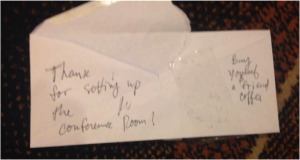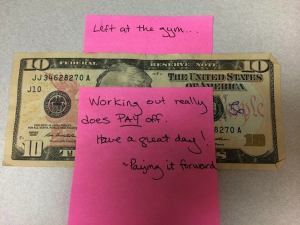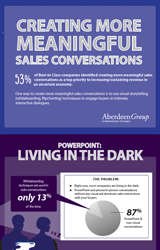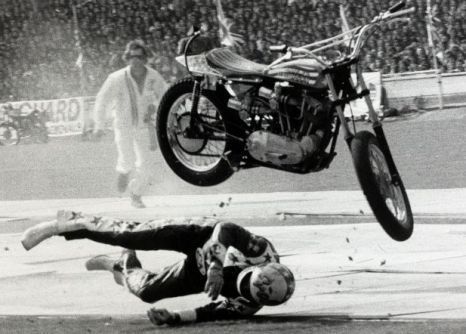Timothy Riesterer's Blog, page 28
January 21, 2015
Corporate Visions Introduces Updated Executive Conversations Training Program
New Visual Concepts, Extended Learning Plan and Third-Party ROI Reporting Improve Skills Development Program Designed to Help Salespeople Justify Business Impact With Executive Buyers
LARKSPUR, Calif. – December 2, 2014 – Corporate Visions, Inc., the leading marketing and sales messaging, tools and training company, today announced it has launched a new version of its Executive Conversations training program. Designed to optimize skills adoption, the updated program adds a blended curriculum and employs a learn-then-do rhythm that equips sales professionals with a proven, repeatable approach for engaging in relevant executive-level conversations.
As part of Corporate Visions’ justification skills solution, this updated program now includes a family of new visual learning concepts specifically created to increase the understanding and application of five key competencies for selling a solution’s business value: business knowledge, customer insight, financial acumen, executive engagement and return on investment (ROI). To promote immediate real-world application, participants are also required to apply the concepts they’ve learned by working on their actual accounts and opportunities throughout the duration of the program, rather than utilizing more hypothetical, case study-based training. A third-party ROI assessment is also included to help attendees track adoption, behavior change and overall business impact.
“I love the new version of Executive Conversations. It shifts the focus from accounting – the flaw of most business acumen courses – to how to use financial analysis to present a clear and useful message to a potential customer,” observed Alan Rubin, sales learning manager at CenturyLink. “It is also completely consistent with the visual tools we already use from other Corporate Visions skills training, and will help us shift the focus of our sales professionals from their product to helping their customers improve their business through the use of our products and services.”
The Executive Conversations program is centered on a two-day workshop, during which participants gain the competence and confidence to engage customer executives through a structured progression of learning experiences. These include:
Completing a 90-minute online pre-work session that prepares participants to arrive in the classroom ready to immediately begin applying and practicing the key concepts;
Working with a seasoned executive who has spent a career making investment decisions during a two-day workshop that provides first-hand exposure and actual practice delivering your message to business buyers; and
Sustaining skills development through systematic online application activities that immediately follow the training and reinforce a thinking process instead of just repeating information.
“Research has shown that executive decision makers value conversations about business trends, issues and insights up to four times more than they value relationships and product expertise – but only 24 percent of salespeople are proficient in their ability to hold a conversation around business challenges,” said Tim Riesterer, chief strategy and marketing officer for Corporate Visions. “Executive Conversations develops the skills needed for sales reps to have more effective conversations with their prospects about the current and future state of their business.”
The post Corporate Visions Introduces Updated Executive Conversations Training Program appeared first on Corporate Visions.
The Power of Gratitude – $10 Buys More than You Think
This week, many of you will be taking time to reflect upon and give thanks for the abundance of love, health, family and friends with which you’ve been blessed this year, and reaffirming your gratitude for the food and family surrounding you. In that spirit of abundance and gratitude, we surprised over 500 of our world-class customers at the recent 5th annual Conversations that Win Conference by tucking $10 under each one of their chairs at my opening keynote address. I then challenged them to “pay it forward” in whatever way they wished over the two-day event.
Pay it Forward – $10 Challenge from Corporate Visions Inc on Vimeo.
As expected, when you start the gratitude chain, $10 can have more impact than you would ever think. My inbox exploded with notes from customers on their stories of gratitude from the $10 Challenge. Here are just a couple of the many heart-warming stories that our customers shared:

Note left for the hard-working venue staff to find.

“I matched the $10 with $10 of my own. I found a homeless person outside a 7-11 in Vallejo, CA. He asked me for 25 cents. I told him I had a deal for him. I said that I would give him $20, but only on one condition…he needed to search out someone who was also needy, and that he needed to give that person $5. He said he would. We shook hands to seal the deal.
I reasoned that of the many blessings that are denied this guy, one of them, no doubt, is to have the feeling of helping out someone who has less than he does. I don’t know if the feeling of philanthropy was as satisfying to him as it was for me, but it matters not. I felt happy for the chance to help out.”
The most interesting concept of gratitude is that it is counter-intuitive; the one who benefits most is the giver. It’s most impactful to the giver when you feel as though you have nothing to give. You will be amazed of the abundance that is attracted into your life through gratitude. The $10 challenge has become an important tradition among Corporate Visions employees over the years, as it is core to our foundational principles of Serving our Employees, Customers & Communities. Our employees have been pretty creative over the years… slipping money into books at the library for young readers to discover…dropping love notes for fellow over-stressed travelers in airports…anonymously picking up the restaurant tab for families…taking a waitress struggling to make ends meet on an impromptu shopping trip for her children. Many have involved their children in these random acts of kindness as a way to teach them the power of gratitude and the real beauty of humanity.
So this week, I challenge you: take $10 (or more) out of your wallet, and find an opportunity to give it away. I promise you’ll find plenty of chances. And I promise that the smallest acts can be some of the most impactful.
It is with a grateful heart and many blessings that I wish each of you a Happy Thanksgiving.
– Joe Terry, CEO
To read more stories of how employees and customers of Corporate Visions are making an impact in their community, check out the Power Foundation website.
The post The Power of Gratitude – $10 Buys More than You Think appeared first on Corporate Visions.
Executive Conversations and the Power of a Great Idea
Recall any Holiday gatherings, while growing up, when you were assigned a seat at the kids’ table?
It wasn’t the worst thing: The food was just as good, the banter often better. Still, whether you’re nine or 90, no one likes feeling inferior. So when you were at last promoted to the adult table, you were pretty thrilled. But you also knew that one mistake could get you relegated back to the short chairs.
Knowing this, you might’ve sensed it was time to elevate your conversation, realizing that if you acted and sounded like a child at the grownup table, you wouldn’t be sitting there for long. Or you’d simply be passed over as irrelevant.
Your salespeople need to adopt a similar mentality during executive conversations—those rare, potentially golden opportunities to speak to high-level prospects whose buy-in can swing the balance in your favor.
To have great conversations with executives—and to avoid getting delegated elsewhere—you have to enter their world and speak to their concerns. Just as in other phases of the buying cycle, the commodity conversation can pose a threat to your dialogue with C-suite buyers—but only if you let it.
In a recent eBook, Corporate Visions highlighted five myths that are limiting your success in selling to the C-suite. One of the myths we covered was the belief that “no budget means no opportunity.”
The persistence of this myth, according to Eric Beckman, VP of Products at Corporate Visions, is one reason so many C-suite conversations falter. Putting the brakes on the conversation this early in the cycle is always a bad idea, he explained, because it’s during these early phases of the decision-making process—the “what to do” or “should I do something different” stage—that executives are often most engaged.
“Contrary to the fact that executives are most often involved early in the decision-making process, too many sales organizations define an opportunity by whether or not the project is funded,” Beckman says. “The result is they engage way too late and miss the chance to actually create opportunities when executives are forming their vision for a new approach.”
Beckman added: “By the time an initiative has been funded, its requirements have already been defined, and possibly influenced by a competitor to align with their capabilities. You’re already late to the party.” That, he said, positions sellers to compete only on price, leading to discounting and non-differentiated conversations.
So the question of whether or not funding is available is really a distraction from what salespeople should be focusing on with executive conversations: Identifying unconsidered needs, giving buyers a compelling reason to break from the status quo, and then putting that into a meaningful business and financial context.
“Executives are the ones who set and prioritize budgets,” Beckman says. “Money will be found for investments that create measurable financial results for the business—the very results to which executive incentive compensation is often tied.”
Because executives have a personal stake in making decisions that bring positive financial results, they place a premium on good ideas. While Beckman said your idea doesn’t necessarily have to be fully developed, it should meet four key standards.
Great ideas in executive conversations should:
Link to an external factor or business initiative important to the executive’s area of direct responsibility
Represent new thinking, perhaps even a change in direction to achieve superior results
Seem credible, real and well thought-out
Not immediately be apparent that it should be delegated
By understanding what defines a powerful idea, and by proposing it early in your executive conversations, your salespeople position themselves as more than salespeople—they become consultants fit to explain the measurable business advantages of leaving the status quo.
The post Executive Conversations and the Power of a Great Idea appeared first on Corporate Visions.
Corporate Visions Named One of the San Francisco Bay Area’s Best and Brightest Companies to Work For
Winners Applauded by the National Association for Business for Superior HR Practices and Employee Enrichment Programs
LARKSPUR, Calif. – November 18, 2014 – Corporate Visions, Inc., the leading marketing and sales messaging, tools and training company, today announced that it has been named one of the San Francisco Bay Area’s Best and Brightest Companies to Work For® by the National Association for Business Resources (NABR). All winners were chosen by an independent research firm based on a rigorous, two-step process that ranked each applicant in categories ranging from communication, recognition and diversity to work-life balance, employee education and retention.
As one of the nation’s premier awards programs, the Best and Brightest Companies to Work For competition identifies and honors organizations that display a commitment to excellence in their human resource efforts and employee enrichment initiatives. Employers must first complete a detailed questionnaire describing internal office operations, followed by a separate employee engagement survey that polls all staff on company policies, culture and practices.
“Profitability and stability are essential for businesses in today’s economic climate. Companies that recognize that their employees are the key to their success achieve staying power,” said Jennifer Kluge, NABR president. “Our 2014 winners create their human resource standards to ensure employee satisfaction and they set standards for every business to aspire toward. We are proud to honor them.”
In addition to this recognition, Corporate Visions is also eligible to compete for the “Best of the Best Overall” awards, which honor companies in the small, medium and large business categories. The winners will be announced at the San Francisco Bay Area’s Best and Brightest Companies to Work For symposium and awards breakfast on Tues., Dec. 9, 2014, at the San Pedro Square Market in San Jose.
“We’ve always felt that our company was an outstanding place to work, but receiving validation of this from such a prestigious organization really underscores our core values of focusing on our employees first, which then gives us the ability to serve our customers and communities better,” said Corporate Visions CEO Joe Terry. “We are grateful and honored to be recognized by NABR as one of the Best and Brightest Companies to Work For due to its rigorous, independent process for selection into this elite group of world-class companies. Additionally, by participating in the NABR selection process, we are provided additional insight on how to further our company principles and better serve our employees, customers and communities.”
About the Best and Brightest Programs
The Best and Brightest Companies to Work For® is a program of the National Association for Business Resources that provides the business community with the opportunity to gain recognition, showcase their best practices and demonstrate why they are an ideal place for employees to work. This national program celebrates those companies that are making better business, creating richer lives and building a stronger community as a whole. There are numerous regional celebrations throughout the country.
The post appeared first on Corporate Visions.
Objection Reframes
It’s one of the more famous lines from one of the most popular sitcoms ever.
Here’s the scene: George Costanza, the “lovable loser” of Seinfeld, is at a high-level meeting as part of his job with the New York Yankees. Some refreshments have been served for the occasion, a large platter of cocktail shrimp among them. Famished, and not one to go lightly into office fare, George proceeds to scarf down several shrimp in short order.
Noticing the rapid intake, a coworker quips, “Hey George, the ocean called. They’re running out of shrimp.”
Amid chuckles at his expense, George musters the following response: “Well the jerk store called. They’re running out of you.”
As comebacks go, this one’s pretty terrible. And like most bad comebacks, it offers little consolation: The same coworker ends up scoring on him again. And the scene closes, as so many in Seinfeld do, with George Costanza looking every part the office buffoon.
It may not be as humiliating as this example, but your prospects are inevitably going to raise objections to your solution during sales conversations. Often these objections are of the stubborn variety, because they’re rooted in the emotions of the “old brain” rather than the reasoning of the new. If you want the conversation to move forward in your favor, you’re going to need to counter these emotional objections with something that addresses your prospect’s fears and changes their perception.
One of the best ways to do that is through “objection reframing.” The idea is to take an apparently negative emotional objection voiced by a prospect, and address it by reframing the discussion in a way that converts negative emotional fears into positive emotional energy.
It’s a bit counterintuitive because your tendency is to address an emotional objection with a rational reply. But that won’t work when you’re facing objections based on a web of fears and bad past associations. An emotional objection has to be countered with an emotional response—a story that reframes their fear and ultimately dispels it.
The following ad from Volkswagen is a perfect example a company reframing a fairly common objection: “You’re too expensive.”
https://www.youtube.com/watch?v=mtV-dYSQ9nE
You can see that an objection reframe functions a bit like a witty comeback. It’s an act of one-upmanship. In this ad, Volkswagen openly admits its product might cost a bit more than those of its competitors. But so what? By the end of it, you’re thinking there’s a great reason for that. Similarly, by drawing a parallel between its competitors and the shoddy parachute, Volkswagen manages to reframe the concept of “inexpensiveness” by associating it with inferior quality. In other words, there’s a reason their competition costs less, and it’s not to their credit.
The same technique translates into sales conversations. This is where salespeople get to flex their creative muscles. Analogies, metaphors, personal stories—anything with emotional resonance can make for a powerful reframing device.
For the price objection, you might ask yourself when in the past you’ve paid more for something that you ended up thanking yourself for later. Then, the next time a prospect raises the objection, you’re not responding with the reason-based answers they’re expecting. You’re telling them how springing for the four-wheel drive vehicle instead of the rear-wheel one was the reason your family got home safely in a blizzard. Or how splurging for those seats behind the dugout was how your daughter got her favorite player’s autograph.
You get the idea. When it comes to reframing objections, the possibilities are limitless. The key is to look outside your industry for a story that’s evocative, memorable and charged with emotion. Because the “jerk store” comeback just isn’t going to hack it.
The post Objection Reframes appeared first on Corporate Visions.
December 5, 2012
Is Your Company Living in the Dark?
You know that dimming the lights and turning on a PowerPoint is more likely to lull your prospects to sleep than to inspire them to make a buying decision in your favor.
So…why are most companies still abusing slide decks in most of their customer conversations?
Check out this infographic based on new research from Aberdeen Group that shows how using whiteboarding techniques in your sales cycles results in:
Higher lead conversion
Higher quota achievement
Increased revenue growth & shorter sales cycles
And view the Brainshark below to get the full details on Aberdeen’s findings on creating more meaningful sales conversations.
Filed under: Business-to-Business, Deliver Conversations that Win Tagged: death by PowerPoint, sales conversations, tim riesterer, whiteboarding, whiteboardselling

December 3, 2012
A lesson for anyone who persuades others for a living
By Erik Peterson, Corporate Visions
A year ago, I got tennis elbow. It was really painful.
I went to my doctor who prescribed some pain medication and referred me to a specialist. I had a heavy travel schedule, so I decided to just take the medicine and book the specialist visit when my schedule lightened up.
A year went by and I still hadn’t scheduled the visit with the specialist. My elbow didn’t bother me unless I played tennis, so I’d stopped playing but was otherwise living a normal life. About this time, my oldest son started getting serious about tennis, and I wanted to practice with him and play against him to help us stay connected. (He’s a teenager and I travel a lot. Finding common interests with him is important to me.) I realized it was time to get the elbow really fixed.
The doctor wins me over
I didn’t have my referral list anymore, so I contacted a doctor a friend recommended. He wasn’t taking new patients and referred me to someone else. I was disappointed. I wanted to get my elbow fixed right then (yes, even though I’d waited a year). This was just some random doctor who I wasn’t sure I could trust. So I went to the office visit thinking, “If I don’t like her, I’m going to find someone else.”
Over the course of 10 minutes she won me over – I knew she was the doctor for me. And it wasn’t until I looked back on the conversation that I understood why. She’d had a conversation with me. Intuitively. She wasn’t an expert on messaging and I, a supposed expert on messaging, had missed her technique in the moment because I didn’t have my messaging hat on. I had my patient hat on. I hadn’t even realized what was happening until later.
What she did was show me something I couldn’t see. It was something that I was sort of aware of, but she gave it a concreteness it didn’t have for me before. She then used contrast to show the value I could get out of being committed to the treatment she was going to recommend.
How she did it
She started by describing to me what was going on in my arm. She flipped over a sheet of paper and drew this picture as she talked to me. (I took this picture at the end of our session when I’d belatedly realized what had happened.)
The left hand side is where the bone in the top half of my arm ends and the right hand side shows the connecting muscles and tendons that lead to my forearm. The things that look like dashes that have been circled represent the tears in my muscles and tendons.
While I’d already known that something along these lines was wrong with my arm, I’d never “seen” it before. This took the abstract idea of tendon tears and made it concrete for me. At the same time, I’d assumed that the problem was just in the tendons, but she showed me that it was in both the tendons and the muscle. This was new information.
Looking back on it, this was when I started to trust her more. She’d shown me something I didn’t know. And she did it in a way that was so convincing and so clear that I stopped wondering if I wanted her to be my doctor. Instead, it was crystal clear that if I decided to go through with the hassle of getting this fixed, then it was going to be with her. But that if was still there. I’d lived with this for a long time. I still wasn’t 100% convinced fixing the problem was worth it.
All the proof I needed
The doctor then had me take turns squeezing a device that measures the strength of the muscles in your hands and forearms. And she wrote the numbers down on the piece of paper. Here’s what it looked like.
I’d generated 120 pounds of pressure with my good hand and only 100 pounds of pressure with my “tennis elbow” hand. And the hand attached to my tennis elbow was my dominant hand; I’d expected it to be far stronger than my non-dominant hand. I could now clearly see that I couldn’t just leave this problem alone. If I didn’t do anything about it, my arm would get weaker and weaker. It was then that I moved from “if I do the treatment” to “when can I start the treatment,” which it turned out, was right then in the same session.
The doctor got it
So how had she moved me from not being sure I trusted her and questioning if I wanted to go through the hassle of fixing the problem to “when can I start?”
She used a visual to show me something I couldn’t see before – the tears in my elbow. She brought me new information by telling me that it wasn’t just my tendons, it was also the muscle in my arm. And then she showed me how much my dominant arm had deteriorated by using numbers.
In some ways, her use of the numbers was most fascinating to me. It’s a technique that we teach at Corporate Visions, but clearly she hadn’t gone through a messaging class. So, I asked her why she wrote the numbers down and she said, “It really helps people when they can see the contrast.”
And here was what was most remarkable to me about the whole thing. I’d spent the last seven years of my life teaching others to use visuals to help people see the unseen problem. I’d coached them to use contrast to show value. And yet, when I was the “customer,” I didn’t even notice the techniques being used on me until well after she’d done her job. When you’re on the receiving end, it’s no longer technique. It’s just effective communication.
The diagnosis
That’s how you communicate expertise. You use simple, hand-drawn visuals. The fact that she could so easily and confidently put pen to paper and draw the problem made me trust her competence far more than any diploma on a wall. Her use of contrasting numbers showed me that I couldn’t stay with the status quo; I needed to get my arm fixed.
This is a lesson to everyone who persuades others for a living.
Use visuals to help your customer see what they’re missing. Use contrasting numbers to let them see the value you can offer if they’ll simply follow your recommendations. And let the simple act of using these techniques communicate your expertise. It’s far more effective than reciting your resume.
To see another example of how to use visual storytelling to persuade, watch this video of Steve Jobs explaining to the employees of NEXT Computers why they should be confident in their new go-to-market strategy. Because this is the way experts message.
http://www.youtube.com/watch?v=p9dmcRbuTMY&feature=youtu.be
Filed under: Business-to-Business, Develop Messages that Matter Tagged: communicating value, confidence, messaging, sales messaging, visual storytelling

November 26, 2012
Sales enablement training can help overcome bad hiring decisions
By Tim Riesterer, Corporate Visions
On average, about 50 percent of sales reps achieve their annual quota. It’s like flipping a coin. Your odds are about the same with sales rep hires. Half the time you get it right, half the time you don’t.
But, you can’t turn over 50 percent of your sales force. In fact, turnover is often the sworn enemy of sales force productivity. Most companies want to avoid recruitment time, rep ramp-up time, hiring costs and a range of other hard and soft expenses associated with large turnover rates. Yet, underperformance must be managed.
Keeping the wrong employee in the wrong position can do more harm than good. A territory can go cold. Leads go stale. Pipeline disappears. Client relationships go sour. This creates an obvious decision to cut losses and remove that person. But, most decisions are not that obvious, and the pain of replacement seems harder than rehabilitation. So, in most cases, you decide to give a rep more time.
Here are a couple ideas for how to isolate the challenges and help fix some of your broken hires.
Don’t land short on the ramp-up
I was a big Evel Knievel fan growing up. Some of his most brutal crashes took place when he landed short and hit the safety ramp. While it was put in place to keep him from hitting the last obstacle, it inevitably jarred the daredevil loose from the bike and he’d tumble like a ragdoll down the rest of the ramp and onto the pavement.
Sales rep ramp time can come up short in the same way.
There are so many obligatory items on the new-hire training list that sometimes the most important pieces of information and skills are left out before the rep is turned loose in the field. Inevitably, they flounder and flail the first time they get on the phone or in front of a prospect or customer. Why? Because they were slammed with sales process training, CRM system training, expense report training, product training, and all the other mandatory, check-the-box, administrative and HR-related training. As a result, salespeople aren’t comfortable with, or trained in, the actual conversations they need to have with prospects and customers.
Does this happen at your company? It’s so ironic. In Aberdeen’s annual sales training survey, the #1 training “action” identified by companies looking to improve their performance is “creating more meaningful sales conversations that address the buyer’s overall business needs.” It’s mentioned more than twice as often as standardizing the sales process.
Yet, the story and the skills required to have an interactive, engaging conversation are left to trial and error in the field. Maybe it’s time to consider flipping the training process. Spend the first 90 days giving your salespeople a handful of powerful, provocative visual stories that will give them confidence in front of the customer, enabling them to add value in customer conversations as soon as possible.
Don’t give them stale skills training and tools
I loved visiting my grandparents growing up, but, if I’m honest, I didn’t like the smell of their house, especially their basement. It smelled old, dingy and musty. Yet, that’s where we were forced to play during the long Wisconsin winters.
For salespeople of any reasonable tenure, the ramp-up process at most companies must smell like my grandparents’ basement. Just because they are new to your company, doesn’t mean they are new to selling. They’ve been through multiple sales processes and many of the same training activities. And, they’ve been living with the administrative burden of CRM for many years. It all just seems stale.
Is it any wonder that they might be getting out of the gates so slowly? What you need is a bit of excitement or sizzle in your sales training and on-boarding curriculum. Salespeople are very emotional. They love to be fired up. They took a new job for something fresh. Give them a new set of skills that will challenge them and get them engaged with telling your story right away.
When companies bring in whiteboards instead of slide decks, and expose salespeople to the art of whiteboarding as part of their training, we’ve seen very positive reactions. We’ve heard salespeople, even grizzled old veterans, say “this changes everything”… and “it makes selling fun again”…or “finally, something I can use tomorrow.”
Aberdeen Group recently conducted a sales training survey and we had them ask companies if any of them were incorporating interactive whiteboard conversations as a replacement for traditional slide deck presentations. While I can’t give you exact numbers yet, the results are compelling and will soon be published.
Of those that said yes, they compared performance numbers and found that whiteboarding companies reduced rep ramp-up time to productivity. Whiteboarding also correlated to an increase in the number of first-year reps hitting quota, higher lead conversion rates and shorter average sales cycles.
It’s important to note that these were only correlations when comparing the performance of companies replacing more traditional decks with whiteboards, but the change is impressive enough to consider how you might freshen up your enablement program.
Filed under: Business-to-Business, Deliver Conversations that Win, Deploy Tools that Get Used, Professional Development, Sales, Sales Readiness Tagged: sales enablement, sales process, Sales Readiness, tim riesterer, visual storytelling

November 20, 2012
It’s your journey: what Ironman has taught me about racing, business and life
By Joe Terry, Corporate Visions President and CEO
Ironman Triathlon: 2.4 mile swim, 112 mile bike, marathon (26.2 mile run) – in that order, with no breaks.
Kona: The Ironman World Championships, the original, preeminent Ironman (the one you’ve seen on TV since the 1970s).
The Grand Plan
The Ironman Florida, Nov. 2, 2012 – Sixteen weeks of Ironman-specific training, many races, and months of base training before that. The training is complete; I have done the necessary work and am going into the race in the best shape of my life. My goal is to beat my 2011 Florida time of 11:07, second goal is sub 11:00, and then, if things are going my way, I’m hoping for 10:45. My race plan is 1:10 swim, 5:15 bike and 4:00 marathon. I am part of the Ironman Executive Challenge; one Kona spot is up for grabs in my age group. There are two other guys that have been faster than me, so my goal is to just do my race plan and not worry about Kona.
Prerace Jitters
My wife and fellow Ironman, Katie, and I arrive two days before the race to settle in. The day before race day, I do a short swim, a 30 minute bike and then a 10 minute run. It feels a little funny – legs are a little tired, doubts start creeping into my head. Why are my legs tired? Did I do enough training? How am I going to do 140.6 miles? This is nuts! I stop myself, take a deep breath, think about my plan and my race, and tell myself it will all work out. I am more nervous about this race than any other I’ve done. Your first Ironman you have no real expectations except to finish. Your second one you want to beat your time, which I did by one hour and two minutes. The third has real expectations and that starts messing with my head.
That night I am tossing and turning all night long. I get up at 2:30 a.m., make some oatmeal, get Katie up and do the same for her. We go back to bed. At 5 a.m. we wake up, have breakfast, get our supplies together and head down to transition. After prerace prep, we get into our wetsuits at 6:25 a.m. and join the Executive Challenge crew at the VIP tent. Pros go off at 6:50, national anthem follows that, I do a little warm up swim. I am nervous as hell. The ocean is rough and 2,800 athletes are now crowding the beach all eyeing the first turn buoy.
Showtime
The cannon goes off at 7 a.m. – BOOM – mayhem. I tell myself to stay calm, stay wide right, nice and easy, it’s a long day. I make it to the first turn in pretty good shape, seas are rough but I am wide enough not to hit too much traffic. I make the next left turn around the buoy and start back to the beach, I hug the inside line, staying out of the mess to my right. Again, nice and easy. I am drinking a lot of sea water because of the waves, and all of the sudden both my hamstrings lock up. What is that? Stay calm; it will go away, just nerves. I get to the beach, 1.2 miles down, now for lap two. I drink some water and start lap two. Fewer people in the way now. Rough seas still. This time I stay tight to the left side, nice and easy, no problems, hit both buoy turns, head back to the beach. A 1:15 swim time, two minutes slower than last year, damn. It’s ok; it’s a long day, no worries. Get through transition, onto the bike.
Battle on the Bike
The bike can make your day or blow it up – anything can happen on the bike: wind, flat, nutrition, heat, other riders, etc. My race plan: hold 21.5 mph at about 90 rpms and finish in 5:15. I start out nice and easy, 20 mph along the coast, a little cross wind, settle in and the miles are ticking off. Head north and start taking in food and salt. I feel my hamstrings, but keep them calmed down. I start playing games in my head; just starting the Wine Country Century, have three loops to Del Valle and back, anything to break it up. I get a couple zingers in my hamstrings but work through it. Now doing 22/23 mph and about 90 rpms, trying to just spin. There are packs of riders everywhere, people drafting and getting put in penalty tents. Though it takes a lot of energy to pass them, I stay clear of the packs; I don’t want to risk a drafting penalty. I get to the turnaround, perfect, right on pace for 5:15. I think, I only have 56 miles left, it’s only the Big Kahuna ride. On my way back, it is now about 87⁰ and heating up, but my energy is good, I keep spinning, keep eating, keep drinking. It’s hard to eat but I keep forcing myself knowing I’ve got a marathon after this 112 mile beast.
The headwind is starting to pick up. I keep spinning, mph drop a little. I hit mile 80 and now I just want off this bike! I pass a guy with one leg; it took me 2.4 miles in the ocean and 90 miles on the bike before I pass him, amazing! When I hit mile 90 I’m heading back toward the beach with the wind in my face. People are blowing up right and left. I pass a gal who is crying. You can’t think about it, it messes with your head, this is your race not theirs. Keep going, stick to your plan. At mile 100 I cross the bridge and start a short, slow climb. I dial it back to pace myself; my hamstring locks up just as I get to the top of the climb. It will calm down, it will be ok, keep going. Excruciating pain, don’t stop – it finally goes away. Last 12 miles, just take it nice and easy. I come in on the bike at 5:18, ok, not bad, three minutes off plan. I transition and head out for the run.
The Final Challenge
My watch says 1:47 p.m.; we started at 7 a.m. and I know I need to come in by 5:45 p.m. to finish in 10:45. Wow, I am right there, I get a little emotional. I tell myself to keep it together, there’s a long way to go yet. This is when the race actually starts. My plan is a four-hour marathon. I start out nice and easy, there are big crowds early in the marathon and that can give you false energy that you’ll need later. I don’t get caught up in it and stay the plan. I settle in on the first couple of miles, no feeling of cramps. I keep taking in salt, Accel Gels and water. I am tired, my legs are tired, but in an Ironman, you are ALWAYS tired. There is that guy with one leg again. I am amazed, look at that guy. I see Katie, she yells, “I love you!” I try to say it back as we pass in opposite directions. It’s getting hotter. Again I start to play games with myself, every mile is hurting. Just get to the next aid station, just get to the turnaround at mile 6.5. I am at about mile five when I see Steve, another Executive Challenge competitor, going the other way, about two and a half miles ahead of me. Man he is way ahead of me! I tell myself no worries, this is your race, stick to your plan.
I get to the first turnaround at mile 6.5 feeling ok, now another 6.6 miles and I am half way. I am not enjoying this; I am trying to go deep into my head thinking about my family, friends, co-workers, our company, looking for gratitude to help me through this. I tell myself, “I am never doing this again, this sucks!” Just then I come out of it, feeling good again at mile 10, but am aware that there will be a few more downs that I’m going to need to work through. Now people are blowing up all over the place, it’s 85⁰ and hot. I pass a guy who throws up in his mouth and tries to swallow it. Just the sound makes me want to gag. People on the side of the race course are puking, laying down – you see it all. Again, I don’t let it mess with my head. It’s too easy to let it creep in… “see it’s hard, look at these people, it’s ok to stop for a little bit.” I get to mile 12 and I see Steve again coming the other way. He is walking. I think, “wow, I can catch him.” I get to mile 13.1, load up on more salt and Accel Gels and head back for the last lap. I catch Steve at about mile 14 or 15 and think to myself “Kona is right in my hands,” and I start to get emotional. Then I remind myself to stick with my plan – this is an Ironman, ANYTHING can happen.
Bringing it Home
I now go to a different strategy to keep my pace. I walk the aide station and take in lots of water, then run a good brisk pace to the next aide station. I do this the rest of the way and it saves my bacon. I get to mile 20. Ok, only a 10K left; I can do that in my sleep. Mile 21 I hit another down cycle. I think “Joe, you knew this was coming, you can get through it, take it easy, and keep going.” Mile 22, ok only four more. I hit mile 23, now I tell myself it’s just a 5K. Things are really hurting, my fingers and toes are tingly and I wonder if my body is shutting down. “Don’t do this now, keep it together!” Just then I see a guy with an Executive Challenge jersey. What? I didn’t know he was in front of me. I tell myself to pass with authority hoping he won’t respond – if he does, I am not sure I have anything left in the tank to answer him. I go past him, don’t look back and keep pushing hard for the next mile. I hit mile 24, take a peek behind me and don’t see him. Thank goodness! I have two miles to go. I can hear the roar of the crowds and the adrenaline kicks in. I can rest at the finish, I think to myself, keep going. At mile 25 there are people everywhere cheering and I start to get emotional again. Keep it together, Joe. Mile 26 now, coming down the chute. I see the finish and hear the announcer say “here comes one of our Ironman Executive Challenge athletes, Joe Terry, YOU ARE AN IRONMAN!” The clock says 10:49 – a new personal record and a spot in Kona. I will take it!
Katie comes in at 11:31, beating her time from last year by an hour and two minutes, ninth in her age group! We clean up and then join the crowds at the finish line to watch the last competitors come in before midnight. This experience is truly inspiring. The top finishing pros are there to greet the last finishers. We see a gal who lost 140 pounds training for Ironman, crying her eyes out, finishing in just over 16 hours. We see a guy named Darrel, in his first-ever triathlon and Ironman, finish at 16:30 and hand him a beer. We see a firewoman come across in FULL GEAR, complete with oxygen tank, and we see a 78-year-old man finish in 16:45. The crowd goes crazy – the spirit of Ironman is amazing!
Lessons Learned
Ironman is a lot like life and business in many ways. Here are my race day takeaways:
Anything can happen. It’s a long day; you must stick with your plan.
There are so many ups and downs: you need to work through them, stick to your goals, keep to the plan and have faith that if you do the right things, it will all work out on the other side.
You must put in the time in order to do your best; there are no shortcuts in Ironman or life. If you don’t put in the training, map out your plan, and execute on your plan, then you shouldn’t expect to perform at a high level.
There is inspiration everywhere around you and miracles happening every day.
It’s your journey – no one else’s. You must follow your path and not worry about comparing yourself to others. There is ALWAYS someone who is faster, more successful, richer, better looking, has nicer “stuff,” a better job, more education, etc. Playing the compare and contrast game is a losing proposition with no sense of accomplishment and satisfaction. Your number one goal should be to win against yourself. As long as you are constantly getting better than you, you will be unstoppable!
See you in Kona in October at the Ironman World Championships!

Joe and Katie, Ironman Florida
Filed under: Professional Development Tagged: business lessons, competing against yourself, ironman florida, ironman hawaii, Joe Terry, kona, triathlon

November 12, 2012
What the Riddler, Alfred Hitchcock, and Jimmy James can teach you about messaging
By Mike Finley, Corporate Visions
“I cannot forecast to you the action of Russia. It is a riddle wrapped in a mystery inside an enigma, but perhaps there is a key…” – Winston Churchill
The words of Winston Churchill often pop into my head when I think about bad sales and marketing messaging. In an attempt to be clever, comprehensive, or incorporate the latest buzzwords and acronyms, companies continually turn basic communication into a conundrum. Fortunately – by following the wisdom of The Riddler, Hitchcock, and James – you can avoid those pitfalls and save your messaging.
Messaging by The Riddler, Don’t “riddle me this riddle me that…”
– The Riddler, “Batman Forever”
Keep your message clear, concise, and simple. I will stop there to avoid contradicting myself.
Messaging by Hitchcock:“Let them know the bomb is going to go off. Then make them wait.”
– Alfred Hitchcock
Don’t overload your prospects with information and facts, as if you were asking them to solve a mystery. Instead, use suspense and tell them about the pain that’s coming – THEN show how you can uniquely alleviate it.
Messaging by James: Don’t be a “a cipher, wrapped in an enigma, and smothered in secret sauce.“
– Jimmy James, “NewsRadio”
Talk about your products and services in your customer’s language. Don’t use acronyms and big words. If they don’t understand what they can DO with your secret sauce, what it MEANS to them, and what it IS, they won’t buy it.
Filed under: Business-to-Business, Deliver Conversations that Win, Develop Messages that Matter, Message Creation Tagged: communicating value, customer conversation, keep it simple, messaging

Timothy Riesterer's Blog
- Timothy Riesterer's profile
- 3 followers











